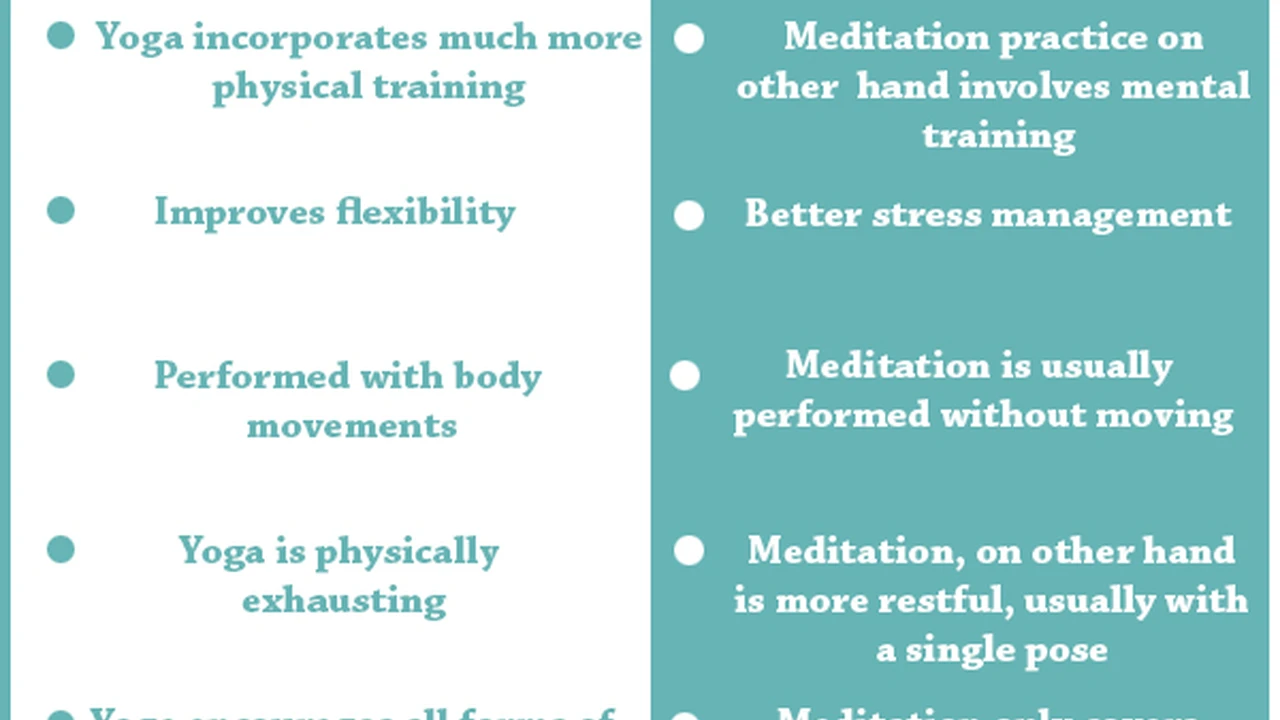Comparing Keto vs. Paleo: Which Diet is Right for You?

Compare the Keto and Paleo diets to determine which one aligns with your health goals. This analysis explores the pros cons and key differences between these popular diets. Make an informed decision based on your individual needs and preferences.
Keto vs Paleo Diet Overview What You Need to Know
So, you're thinking about changing your diet? Awesome! Two of the most popular options out there right now are the Ketogenic (Keto) and Paleolithic (Paleo) diets. Both have their die-hard fans and both promise some pretty impressive results. But which one is actually right for you? Let's break it down in plain English, no confusing jargon, just the facts.
What is the Keto Diet Understanding Ketosis and Macronutrients
The Keto diet is all about drastically reducing your carbohydrate intake and replacing it with fat. We're talking seriously low carbs – usually under 50 grams a day. The idea is to force your body into a metabolic state called ketosis. When you don't have enough carbs for energy, your body starts burning fat instead, producing ketones which it then uses for fuel. Think of it like switching your car from running on gasoline to running on alternative fuel. It's a complete energy source shift.
Key elements of Keto:
- High Fat: Around 70-80% of your daily calories should come from fat. Think avocados, nuts, oils, fatty meats.
- Moderate Protein: About 20-25% of your calories. Chicken, fish, beef, eggs.
- Very Low Carb: Only 5-10% of your calories. This means saying goodbye to most grains, starchy vegetables, and sugary fruits.
What is the Paleo Diet Embracing Our Ancestral Eating Habits
The Paleo diet, often called the "caveman diet," is based on the idea that we should eat like our hunter-gatherer ancestors did. The premise is that our bodies haven't evolved to properly process modern, processed foods, leading to health problems. So, Paleo focuses on whole, unprocessed foods that our ancestors would have had access to.
Key elements of Paleo:
- Emphasis on Whole Foods: Lean meats, fish, fruits, vegetables, nuts, and seeds.
- Avoids Processed Foods: Grains (especially wheat), legumes (beans, lentils), dairy, refined sugar, and processed oils are all off-limits.
Keto vs Paleo Key Differences in Food Choices and Restrictions
This is where things get interesting. While both diets prioritize whole foods, their restrictions are quite different:
- Carbs: Keto is extremely low-carb, while Paleo allows for a moderate amount of carbs from fruits and vegetables.
- Dairy: Paleo strictly avoids dairy, while Keto allows for some high-fat dairy products like cheese and heavy cream (in moderation).
- Legumes: Paleo excludes legumes, while Keto generally allows for them in small amounts if they fit within your carb limits.
- Grains: Both diets generally avoid grains, but Keto is stricter about even small amounts of whole grains.
Health Benefits of Keto and Paleo Exploring Weight Loss and More
Both diets boast a range of potential health benefits. Let's take a peek:
Keto Diet Benefits for Weight Loss and Blood Sugar Control
- Weight Loss: Keto can be very effective for weight loss, especially in the short term, due to its impact on hormones and appetite.
- Blood Sugar Control: It can improve blood sugar control for people with type 2 diabetes.
- Epilepsy Management: Keto has long been used to help manage epilepsy, particularly in children.
Paleo Diet Benefits for Inflammation and Gut Health
- Reduced Inflammation: Paleo's emphasis on whole foods and avoidance of processed ingredients can reduce inflammation in the body.
- Improved Gut Health: Eliminating grains and legumes may benefit some people with digestive issues.
- Weight Management: Paleo can lead to weight loss due to its focus on whole, unprocessed foods.
Potential Drawbacks and Risks of Keto and Paleo Considering Long-Term Sustainability
No diet is perfect, and both Keto and Paleo have potential downsides:
Keto Diet Side Effects The Keto Flu and Nutrient Deficiencies
- "Keto Flu": During the initial transition to Keto, you might experience flu-like symptoms like fatigue, headache, and nausea.
- Nutrient Deficiencies: Strict Keto can be difficult to sustain long-term and may lead to nutrient deficiencies if not carefully planned.
- Digestive Issues: The high fat content can cause digestive problems for some people.
Paleo Diet Restrictions Social Limitations and Cost Considerations
- Restrictive: Paleo can be quite restrictive, making it challenging to eat out or socialize around food.
- Cost: Focusing on high-quality meats and fresh produce can be expensive.
- Not Always Sustainable: Some people find it difficult to maintain Paleo long-term.
Who Should Consider the Keto Diet Specific Health Conditions and Goals
Keto might be a good option for you if:
- You're looking for rapid weight loss.
- You need to manage blood sugar levels due to diabetes or insulin resistance.
- You're interested in exploring its potential benefits for epilepsy.
Who Should Consider the Paleo Diet Focusing on Whole Foods and Ancestral Health
Paleo might be a better fit if:
- You want to focus on eating whole, unprocessed foods.
- You're looking to reduce inflammation in your body.
- You have digestive issues and want to experiment with eliminating grains and legumes.
Keto and Paleo Diet Food Lists A Detailed Comparison
Here's a quick side-by-side comparison of what you can typically eat on each diet:
| Food Group | Keto | Paleo |
|---|---|---|
| Meats | Fatty cuts of beef, pork, lamb, poultry | Lean meats, poultry, fish |
| Fish | Fatty fish like salmon, tuna, mackerel | All fish |
| Vegetables | Low-carb veggies like leafy greens, broccoli, cauliflower | All non-starchy vegetables |
| Fruits | Small amounts of berries | All fruits in moderation |
| Nuts & Seeds | Most nuts and seeds | Most nuts and seeds |
| Dairy | High-fat dairy like cheese, heavy cream (in moderation) | None |
| Legumes | Generally avoided, some allowed in small amounts | None |
| Grains | None | None |
| Oils | Healthy oils like avocado oil, coconut oil, olive oil | Healthy oils like avocado oil, coconut oil, olive oil |
| Sweeteners | Sugar-free sweeteners like erythritol, stevia | Natural sweeteners like honey, maple syrup (in moderation) |
Product Recommendations for Keto and Paleo Diets
Okay, let's talk specifics! Here are some product recommendations to help you navigate these diets:
Keto-Friendly Product Recommendations and Where to Buy Them
- Perfect Keto MCT Oil Powder: This is great for boosting ketone production and energy levels. Add it to your coffee or smoothies. Around $30 on Amazon.
- Quest Nutrition Protein Bars: These are low-carb and come in a variety of flavors, making them a convenient snack option. About $25 for a box of 12. Available at most grocery stores and online.
- Nutiva Organic Coconut Oil: A staple for Keto cooking. Use it for everything from frying eggs to baking. Around $15 at health food stores.
- Keto-friendly Meal Delivery Services: Many companies now offer pre-made Keto meals delivered to your door. These can be a lifesaver if you're short on time. Expect to pay $10-$15 per meal.
Paleo-Friendly Product Recommendations and Where to Buy Them
- RXBAR Protein Bars: Made with whole foods like dates, nuts, and egg whites, these are a great Paleo-friendly snack. Around $25 for a box of 12. Available at most grocery stores and online.
- Primal Kitchen Avocado Oil Mayo: A delicious and healthy alternative to traditional mayonnaise. Around $10 at health food stores.
- Thrive Market Membership: This online retailer offers a wide selection of Paleo-friendly foods at discounted prices. Membership costs around $60 per year.
- Paleo Meal Delivery Services: Similar to Keto, you can find Paleo meal delivery services. These provide convenient, pre-made meals that adhere to Paleo guidelines. Expect to pay $10-$15 per meal.
Comparing Specific Products for Keto and Paleo Diets
Let's dig a little deeper and compare some specific products:
Protein Bars Keto vs Paleo A Detailed Comparison
Quest Nutrition (Keto): Primarily uses whey protein isolate and artificial sweeteners. Focuses on low carb count.
RXBAR (Paleo): Uses whole food ingredients like dates, nuts, and egg whites. Naturally sweetened.
Verdict: If you're strictly Keto, Quest is the better option. If you're Paleo, RXBAR is the clear winner.
Oils Keto vs Paleo Which Oil to Choose
Coconut Oil (Keto & Paleo): Great for high-heat cooking. Solid at room temperature.
Avocado Oil (Keto & Paleo): Versatile for cooking and salad dressings. High smoke point.
Olive Oil (Keto & Paleo): Best for low-heat cooking and dressings. Rich in antioxidants.
Verdict: All three are good choices for both diets. Choose based on your cooking needs and flavor preferences.
Making the Right Choice for You Personalized Diet Considerations
Ultimately, the best diet is the one that you can stick to long-term and that makes you feel your best. Consider these factors when making your decision:
- Your Health Goals: What are you hoping to achieve with your diet? Weight loss? Improved energy? Better blood sugar control?
- Your Lifestyle: Can you realistically maintain the restrictions of either diet? Do you enjoy cooking? Do you eat out often?
- Your Preferences: Do you enjoy the foods allowed on each diet? Are you willing to give up certain foods?
- Consult a Professional: Talk to your doctor or a registered dietitian before making any major dietary changes. They can help you determine which diet is right for you based on your individual needs and health history.
:max_bytes(150000):strip_icc()/277019-baked-pork-chops-with-cream-of-mushroom-soup-DDMFS-beauty-4x3-BG-7505-5762b731cf30447d9cbbbbbf387beafa.jpg)






